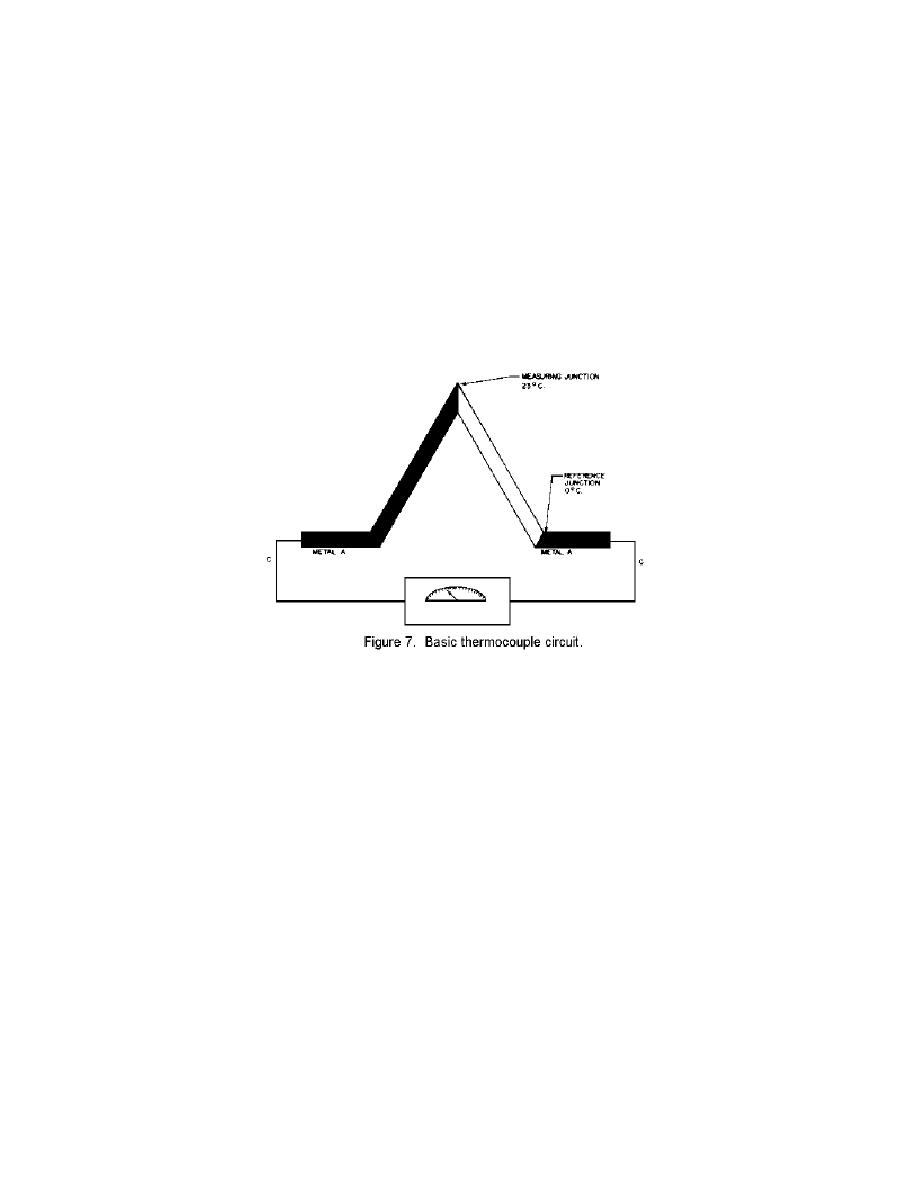
relative indications. Since we are interested in accurate temperature measurement, these
types of thermometers will not be discussed.
The thermometers discussed thus far can be considered as mechanical in operation. Now
we will see how electrical thermometers operate.
7. THERMOCOUPLE THERMOMETER
The principle of the thermocouple is based on a law of thermodynamics which states, "A
thermal electromotive force (EMF) is developed (and can be measured) when the
junctions of any two dissimilar metals are at different temperatures."
From the previous statement, it can be noted that a junction formed by two dissimilar
metals, when heated, will produce an electric current. Also, there will be other junctions
formed by connecting leads to an ammeter circuit. (See figure 7.)
There definitely must be a thermal difference between the junctions of any two dissimilar
metals that are at different temperatures.
The voltage generated by the thermocouple is proportional to the temperature difference
between measuring and reference junctions.
Although the thermocouple is useful over a wide range of temperatures, there are two
basic limitations to its range. First, the reaction of thermocouples near the reference
temperature and, then, the reaction of the "couples" at high temperature.
Thermocouple sensitivity decreases as the difference between the measured temperature
and the reference temperature becomes very small. The apparent loss of sensitivity is due
to the amplitude of the voltage being generated for small differences of temperature. At
high temperatures, thermocouples are subject to melting action which will damage, if not
destroy, them.
At temperatures very close to the reference temperature, thermocouples generate very
small thermal voltages; a condition which results in poor sensitivity. To overcome this
situation, more sensitive meter circuits are used or the thermocouples are mounted in
series (called a thermopile) to increase the voltage output.
At high temperature the "couples" are subject to melting action. The answer to this
problem is to use an indirect measuring technique or materials with higher melting points.



 Previous Page
Previous Page
